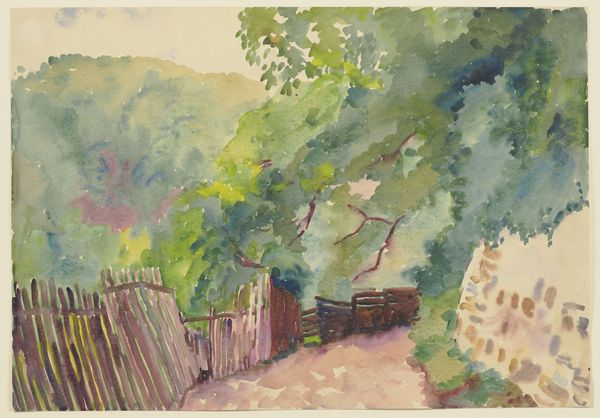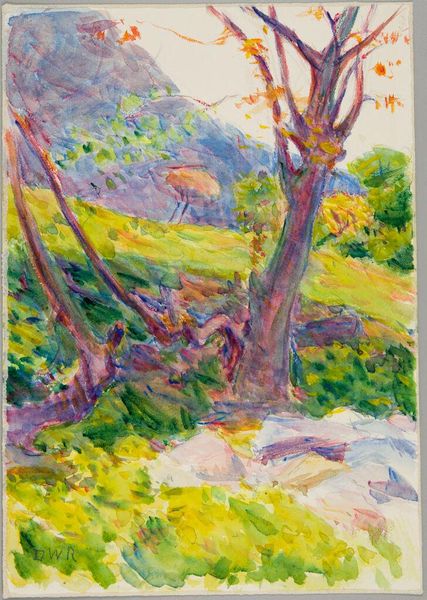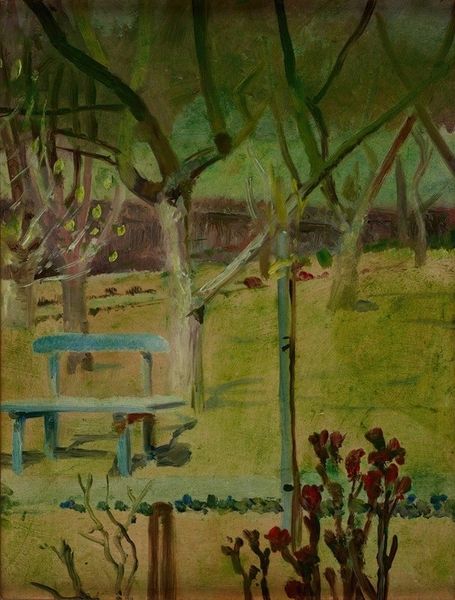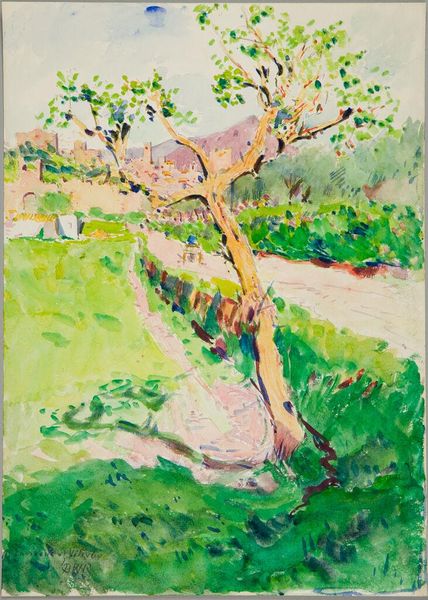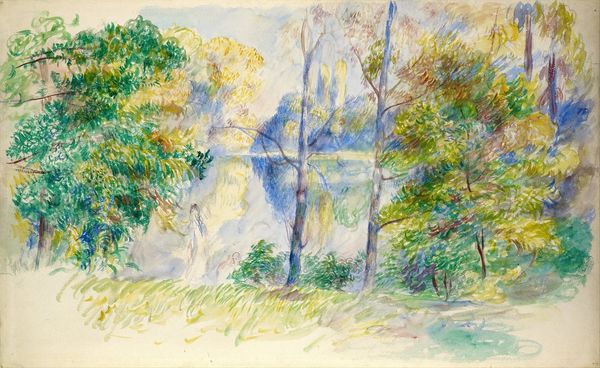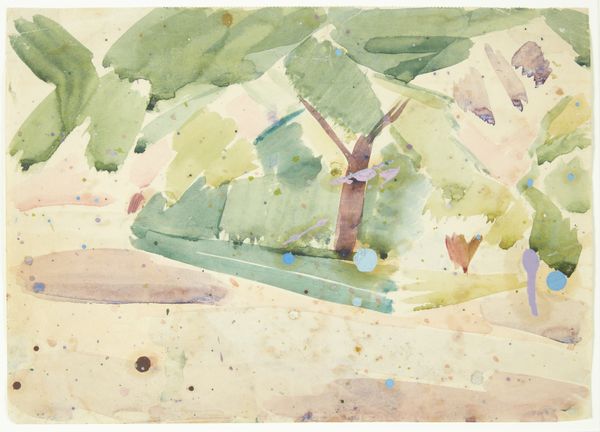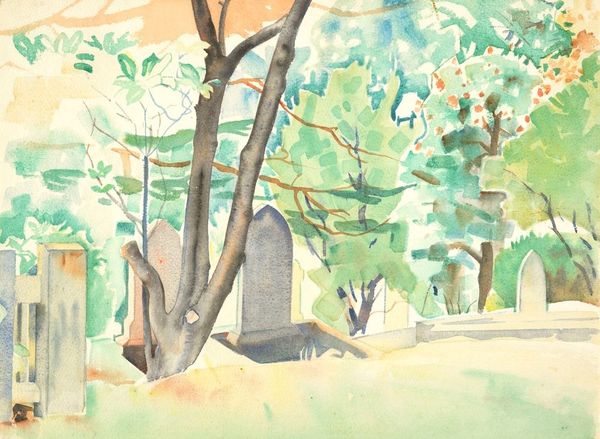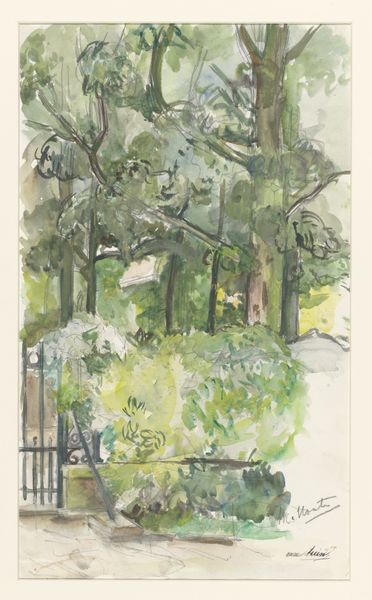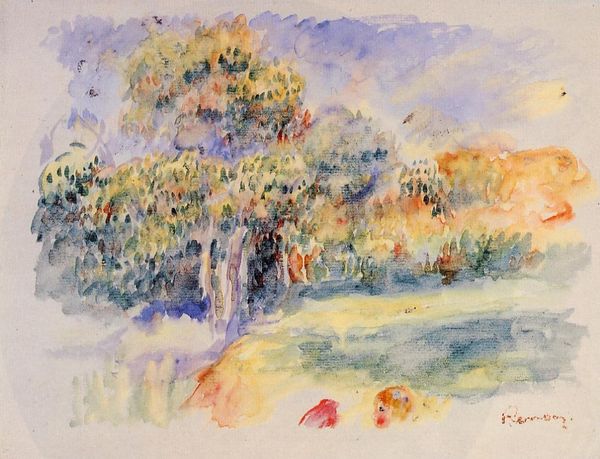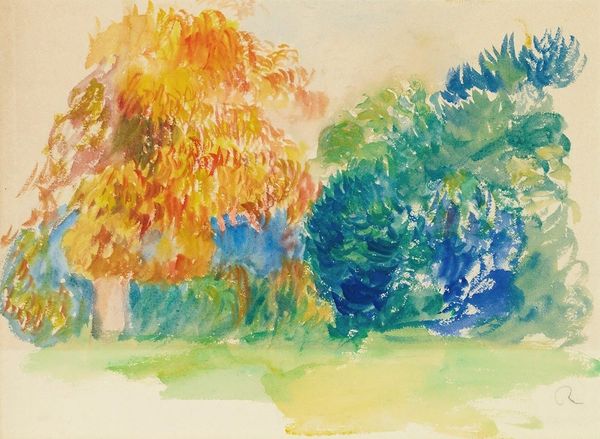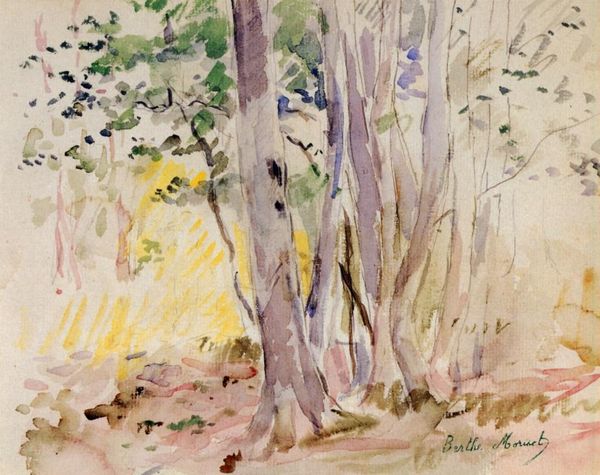
Untitled (Garden at Waikanae) 1957
0:00
0:00
ritaangus
Christchurch Art Gallery Te Puna o Waiwhetū, Christchurch, New Zealand
Copyright: Rita Angus,Fair Use
Curator: This watercolor on paper, simply titled "Untitled (Garden at Waikanae)," was created in 1957 by Rita Angus. The landscape gives me the feeling of hot sand, the sun, shade, and tranquility... it's almost tactile. Editor: My initial thought went straight to materiality, a bit dry maybe but important, I think. Just look at the texture! You can see Angus wrestling with the absorbent quality of the paper to create translucent washes but also retaining distinct lines to represent form. The plein-air technique lends itself nicely to such visible process, almost diaristic in the application of washes. Curator: Diaristic... I love that! It really feels like a stolen moment, like we’re peeking into Angus’s creative sanctuary. The unassuming scene... an easel waiting, that empty chair—they speak of both presence and absence. Does that make sense? I feel a yearning there, maybe. Editor: Definitely makes sense, though I would focus the concept of “presence” around Angus's labor – and the labor of everyone involved in material production. After all, this watercolor relied not only on Angus's application but also on paper mills, pigment mixing, brushes constructed in different workplaces by artisans equally crucial to this picture. We can explore these connections through mindful, material readings, or something like that. Curator: Yes! Absolutely, those interconnections make it even more potent, like echoes of shared efforts humming within that garden. Plus, those blues used on what is probably glass make it sing... like little secret portals. A window. A watery color, as light itself is contained, and revealed, by craft! Editor: Agreed. We need to think of Impressionism as less fleeting impressions, and more moments of synthesis when looking at such detailed technique; those trees required many hours of work behind them! Maybe her labor becomes our gain, especially when understanding where these water colors come from. Curator: Perhaps what's more impressive about Angus, it’s how a very traditional medium—watercolor—becomes radical on paper—like this is an act of tender rebellion in such an ordinary, unshowy subject? Editor: Beautifully put! Maybe now the viewers are more fully aware not just of some scenery but its quiet revolutionary means!
Comments
No comments
Be the first to comment and join the conversation on the ultimate creative platform.

